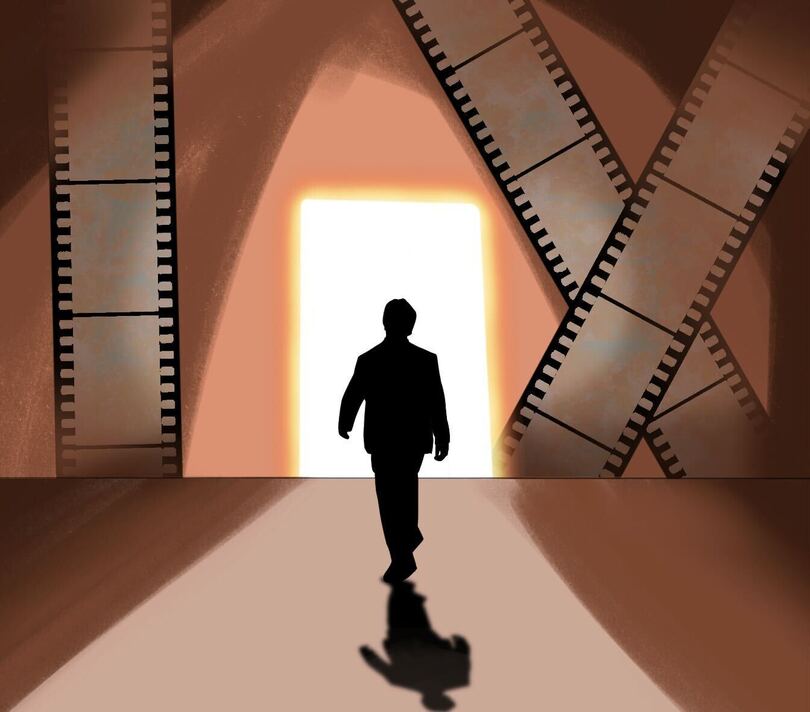‘The Fabelmans’ is Steven Spielberg’s most sincere and courageous work

Jaeson Rivera | Asst. Illustration Editor
Sammy Fabelman, the main character and depiction of Spielberg, falls in love with film after seeing “The Greatest Show on Earth” in theaters.
Get the latest Syracuse news delivered right to your inbox.
Subscribe to our newsletter here.
Despite keeping his personal life and background relatively private, Steven Spielberg has become the most financially successful film director in history. His work often reflects familiar themes and ideas, like absent fathers and young dreamers who escape into fantasy worlds. Yet, audiences have only been given small glimpses into his world, filtered through the Hollywood spectacle of shark attacks, alien invasions and Indiana Jones escapades.
Even in Spielberg’s later dramas, a series of grounded, smaller-scale works such as “The Color Purple” and Academy Award winning film “Schindler’s List,” he tends to focus on the stories of prominent historical figures and literary icons, lending his style and imagination to their narratives.
It was a surprise, then, when the director revealed his newest project to be a decade-long deep dive into his own childhood. The finished product, “The Fabelmans,” is the most sincere and courageous work of his long career, which covers his complex relationships with both his family and his personal journey with the art of filmmaking.
For the first time, Spielberg has not chosen to tell another person’s story— he instead has put faith in his own.
Spielberg’s passion for film is clear from the very first sequence in which a young Sammy Fabelman — Spielberg’s chosen pseudonym — takes a trip to the movie theater. He goes with his parents to see “The Greatest Show on Earth” in theaters, and becomes obsessed with trains after he sees the film’s climactic train crash sequence.
Spielberg first uses full extended sequences from “The Greatest Show on Earth” to simulate the experience of being in the theaters in 1952 for theatrical audiences today. Then, Spielberg turns the camera on Sammy and his family as they sit in the packed audience of the theater, creating the disarming effect of seeing yourself sitting in the theater mirrored on screen.
Sammy asks for a model train for Hanukkah, but breaks the toy as soon as he receives it when he tries to reproduce the events of the film he watched. Sammy’s mother poses a solution to this problem and buys him his first camera.
With the help of the camera, Sammy only has to crash the train once, record it, and then watch the action back on tape as many times as he wants. Sammy uses this camera to make a shot-for-shot recreation of the train sequence from the movie, and thus, a lifelong love for film is born.
Mateo Zoryon Francis-DeFord and Gabriel LaBelle star as the pre-teen and teenage versions of Sammy Fabelman, alongside Paul Dano and Michelle Williams, who play his parents, Burt and Mitzi. The standout performance comes from Williams, whose portrayal of a misunderstood woman trapped in a stilted marriage is energetic and heartbreaking. Dano complements her nicely, straddling the line between meekness and quiet dignity as Sammy’s introverted father.
Judd Hirsch stars as the aloof Uncle Boris, who shows up out of the blue to sit shiva for Sammy’s deceased grandmother. Boris, a self-proclaimed artist who ran away from home to join the circus, is the first person to identify Sammy’s ambition as a filmmaker.
Boris tells him to follow his passions at all costs, even if it tears him apart from his family. At first, Sammy rejects this advice, but Boris reminds him of what happened to Sammy’s own mother, who could have been a concert pianist if she hadn’t listened to the cautious advice of her parents.
“Oh, you love those people, your sisters, your mama, your papa. Except…except this,” Boris said, with his hand on Sammy’s 8mm editing machine. “This, I think you love a little more.”

Sammy chases the magic moment of a community coming together to share their love of film throughout “The Fabelmans.” Film becomes his way to make connections with his peers and stand out in school: in one scene, Sammy wins over a vicious high school bully by portraying him as the hero in one of his films. Spielberg vividly captures the pure, unadulterated joy of creation for its own sake, and the thrill of feeling understood when that work is shared.
In a later scene, during an intense family dispute in the Fabelmans’ living room, Sammy sees a vision of himself with a camera filming the event in the corner of a nearby mirror.
This is the flip-side of the movie theater sentiment: films can form the basis of our inspirations, but they can also be a place to store, edit and examine our deepest fears and traumas. “The Fabelmans” is Spielberg’s attempt to process his life through the familiar structure of filmmaking.





